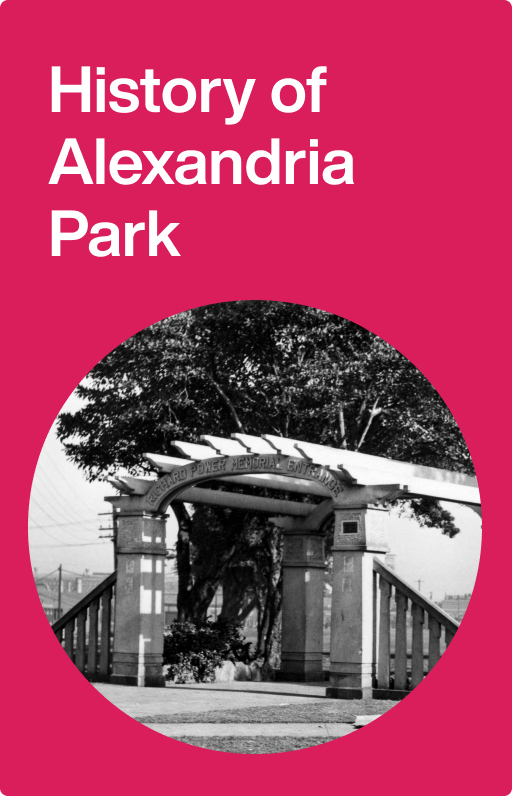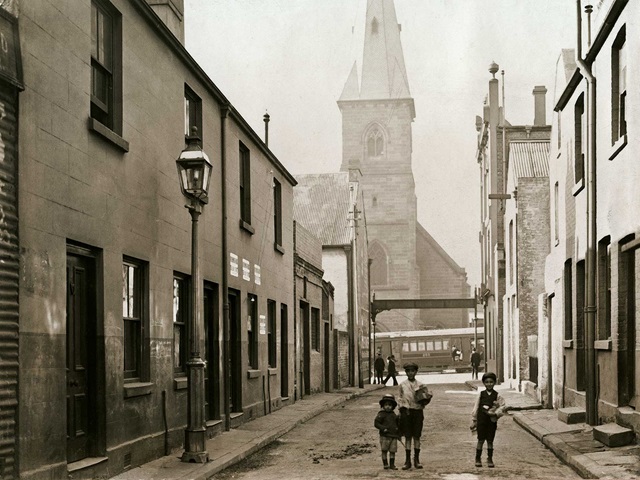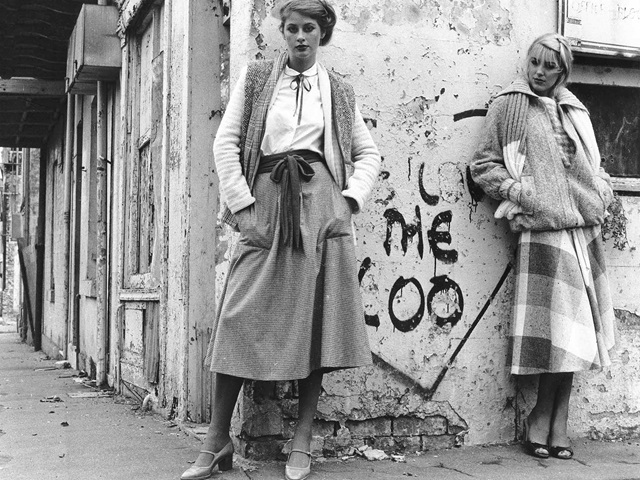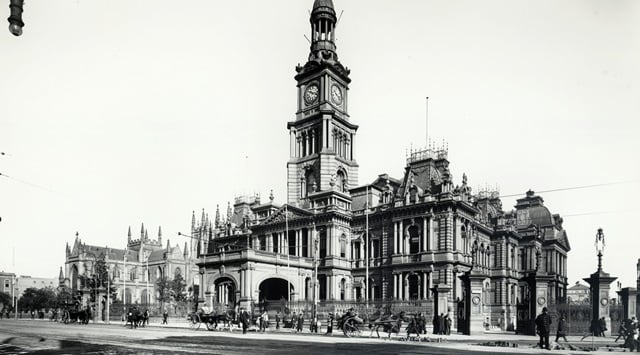History of Alexandria Park
Learn about the interesting history of Alexandria Park, including how important it is to Aboriginal communities.

Alexandria Park is between Buckland, Park and Wyndham streets and Power Avenue, Alexandria.
Alexandria Park’s history is closely connected with a court decision that had a devastating impact on the rights of Aboriginal and Torres Strait Islander peoples.
In 1823, convict William Hutchinson received a 1,400-acre (about a 566 hectare) grant of land on the condition the Crown could later turn 10 acres (about 4 hectares) into a park. This section became Alexandria Park in 1882. The park was an extremely small area of the grant but William Cooper, who owned the land by 1882, took the government to court over the move. He lost the case and the park finally opened on 18 October 1889.
In its 1889 ruling, the Privy Council in England applied the terra nullius principle, established by the British when they invaded Australia. Although First Nations people had an enduring connection with the land for more than 65,000 years, the Crown took possession on the false belief that the land was uninhabited and belonged to nobody.
Confirmation of terra nullius cemented the dispossession of Aboriginal and Torres Strait Islander people in Australia’s legal framework. More than one century later, the High Court’s Mabo decision in 1992 overturned terra nullius and recognised the enduring connection of First Nations people with their land.
In the years before Alexandria Park officially opened on 18 October 1889, Chinese market gardeners cultivated its grounds, taking advantage of the creeks flowing across the site.
After the opening, Alexandria Council evicted the market gardeners, drained the park and built a sewer. Alexandria was then known as a densely populated, heavily industrialised borough that was deeply in debt. The park’s level, with its sandy subsoil, was considered too low. To fill it cheaply, garbage and street sweepings were deposited in the park and covered with more sand, creating a foul-smelling rubbish tip. Even after the levelling was completed, the practice of depositing rubbish in the park continued until 1895.
From the mid-1890s, efforts were made to improve the park. The rows of Port Jackson and Moreton Bay fig trees along the park boundaries date from that time, as does the layout of the paths that criss-cross the sire diagonally. The concrete gateways at the park entries date from 1939, with the McKell’s Children Playground was opened by the member for Redfern, Sir William John McKell (Premier of NSW 1941–47, Governor-General 1947–51).

Installed in the corner of the park, the Richard Power Memorial Gates commemorate the alderman after he died in 1939. Power served on Alexandria Council in 1922–25 and 1929–38 and was mayor twice during the 1930s. He lived on nearby Wyndham Street and kept a close eye on the park with great pride. Power Avenue was also named after him. When the 1960s facilities on Power Avenue were upgraded in 2000, they were redesigned to match the design of the memorial gates.
The park was used for sports activities from the beginning. Three wickets were available for lease from late 1889, an oval was built shortly later and in 1905 a pavilion was opened. A tennis court and clubhouse were built in 1939, replacing earlier tennis facilities. They were redeveloped in 1977 when a new clubhouse was constructed.
One of Australia’s oldest Aboriginal rugby league football clubs, the Redfern All Blacks, came together to train and play matches at Alexandria Oval from the 1940s. The club formed at a time when Aboriginal peoples endured systemic and structural racism, and discrimination at every level. They were excluded from mainstream civil society, including being banned from pubs and swimming pools, and were not allowed to vote.
Yet in the face of these injustices, the Redfern All Blacks formed and became hugely successful. Many of its young Aboriginal players later forged professional careers. Membership of the club also gave players a strong sense of community, helping them to cope with Sydney’s tough urban environment and providing a sense of identity and pride.
Aboriginal community associations with the park extend beyond sport. Wiradjuri welfare worker Shirley Smith, known as ‘Mum Shirl’, regularly held ‘legendary’ Christmas parties for more than 1,000 disadvantaged children at the park into the 1980s. The park also hosted the National Aboriginal Day in July until NAIDOC Week was established in 1996. During Alexandria’s long history of industrialisation and more recent urban renewal, Alexandria Park has always been a popular place for locals to come together for public celebrations, community gatherings, concerts, sports and recreation.



